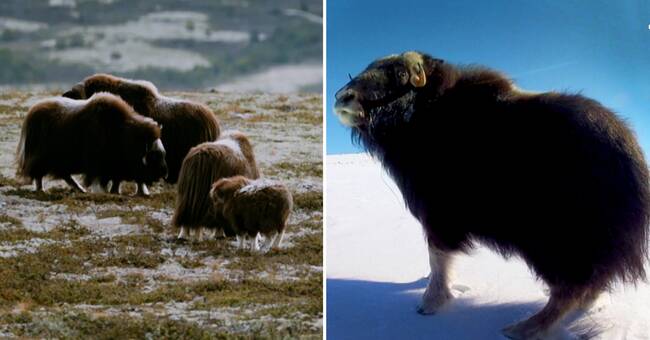The musk ox died out in Scandinavia after the ice age and is naturally only found in Canada and Greenland.
In the 1950s, eleven calves from Greenland were introduced in the area around Dovrefjäll in Norway and in 1971 a small herd of five animals crossed the border into Härjedalen.
At most there were 34 musk oxen in the Swedish flock, but in 2013 the number was down to 5 again.
Ran straight to the wild herd
Diseases that arise due to a warmer climate and too little genetic spread in the herd are two possible reasons why it decreased so sharply.
But in 2013, the gene pole was expanded when Idun was transported by helicopter from Myskoxcentrum in Tännäs to his new family in the mountains.
- When she saw them, she ran straight there.
Just like she has not done anything else, says Hielke Chaudron in In the middle of nature - In the footsteps of the climate.
Only two sexually mature cows in the herd
Exactly how many calves Idun has had is unclear because it can sometimes be difficult to know which of the herd's two sexually mature cows has calved.
But Hielke Chaudron thinks she has received between four and six pieces.
- Idun had a huge impact on the number, because when she came there was only one sexually mature cow, which also died a few years later.
So she came in the count's time.
Do you want to know more about musk oxen and the animals that benefit or are disadvantaged by climate change? Watch Mitt i Naturens - In the climate's tracks in SVT Play.

